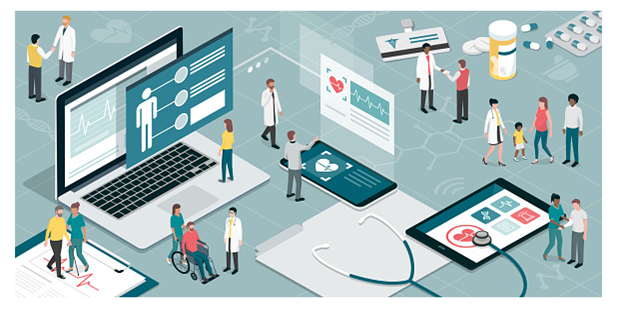Health is a fundamental part of any society, and it forms a backbone for the economic, physical, and emotional well-being of the people. It is a broad field that involves multiple professionals; therefore, it requires smooth coordination between the different stakeholders for optimum results. The integration of information technology is promising to be the development that will move this sector towards increased efficiency, better patient care, and reduced errors.
The same way online casinos have made gambling convenient, health IT has made a similar impact on healthcare. If you want to play slots, you can simply go to the top casinos list on theinternetslots and enjoy it. Similarly, health information technology has made it easier for authorized professionals to access patient records, which helps them to make the best decisions. How does it work?
Electronic Health Records
Health IT involves the design, creation, utilization, and maintenance of information systems in the health industry. The most widespread application is the use of electronic health records. It is the use of a digital health record that is prepared by various professionals and can be shared among various practitioners. The record may contain the full history of the patient, all the prescriptions, lab reports, insurance plans, and all the relevant data.
The development of the Picture Archiving and Communication Systems and Vendor Neutral Archive have also integrated radiology into this system. They enable care providers to add the medical images of patients into this system, which makes it even more complete. Cardiologists also carry out various procedures like ECG that can also be stored in these systems.
Patients tend to visit various specialists; hence, each of them needs to access all the necessary information before making a decision. Communication between physicians and pharmacists and even other physicians was a great challenge in the past that led to serious life-threatening errors. With the use of electronic health records, all the experts can access full info; thus, patients can get the highest attainable standards of health.
These information portals are still undergoing further development to increase their applicability. They are currently being established to be a communication tool between patients and physicians. This will enable them to consult their doctors, order prescriptions, obtain their medical records, and even assess their insurance plans. The success of this development will greatly improve the efficiency of healthcare provision.
The filling of electronic health records can also be associated with the fatigue and boredom of filling the physical health records. Hence, IT experts are looking for innovative ways of improving these systems. The use of dictation and voice recognition could be the future of these records. Devices can also be used to record videos of patients during physician visits, which can even be used in reviews in case of treatment failures.
The use of electronic health records is highly beneficial in the health sector. It has led to better tracking of chronic disease patients. These patients require close monitoring since they are often treated for a lifetime. Some diseases, such as hypertension, have easily measurable parameters, which can be filled by the patient and help the doctors to make the right decisions.
These systems have also led to the early detection of disease outbreaks and antimicrobial resistance. They also facilitate the creation of more complete records since they enable data to be filled in a specific format, thus enabling professionals to include all the necessary information. The issue of ineligible of data is also alleviated.
Clinical Decision Support
With the rise of electronic prescriptions, health IT can be used to support the decisions of doctors and alleviate the obvious errors.
For instance, the medication guidelines usually have maximum and minimum dosages for various drugs and various conditions. When the condition is entered, and the prescribed drugs added, the system may alert the physicians when they exceed the dose or if there are additional risks or factors to consider.
Although the implementation and utilization of these systems are slow, they will drastically improve the care that patients get. They will also improve pharmacovigilance since it will be easier for professionals and even the patients to report adverse effects and poor quality medicines, thus enabling investigations to be done promptly.
Artificial Intelligence
The field of artificial intelligence has become quite vibrant, and it seems to be the future of health information technology. This tech can be incorporated into the systems, thus automatically alerting doctors and patients in case of risks.
For instance, ICU machines can have algorithms inputted that will help to track the patient and warn the care providers if there is a worsening of the patients.
Currently, advanced devices like the smartwatch and cellphones have been used to track the vitals of patients during exercise and other activities. Perhaps patients will soon be able to take their blood pressure and blood sugar, fill them into their electronic health records, and get alerts in case they need more care.
The use of health IT is slowly being embraced as a dispensing tool; although, it is associated with some risks. The progressive growth of this industry will improve the care to the patients, alleviate errors, and increase efficiency.
Health information technology works towards improving the outcome of patients. It reduces the risk of errors, facilitates tracking of patients with chronic diseases, enables early detection of infectious outbreaks, and facilitates the creation of complete patient records. Its growth will certainly improve the health sector.

